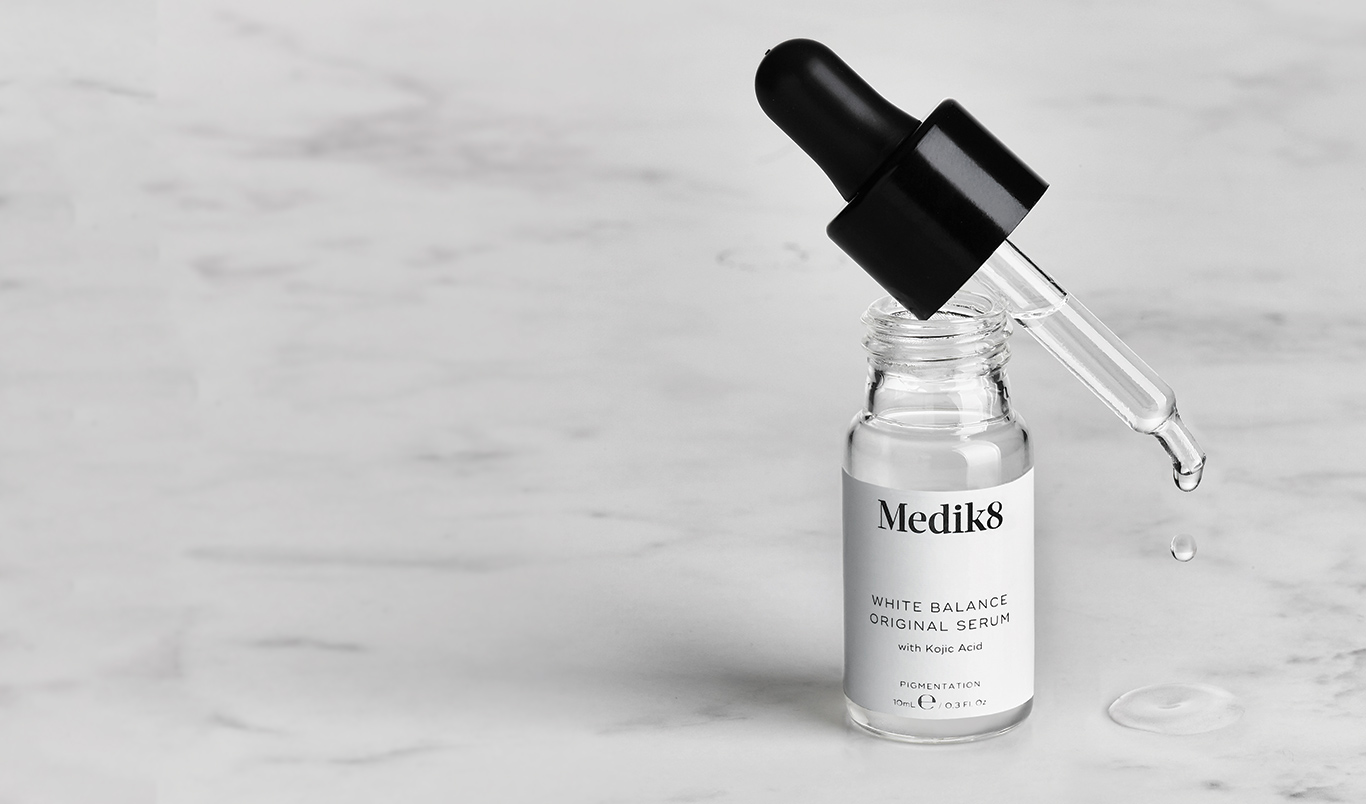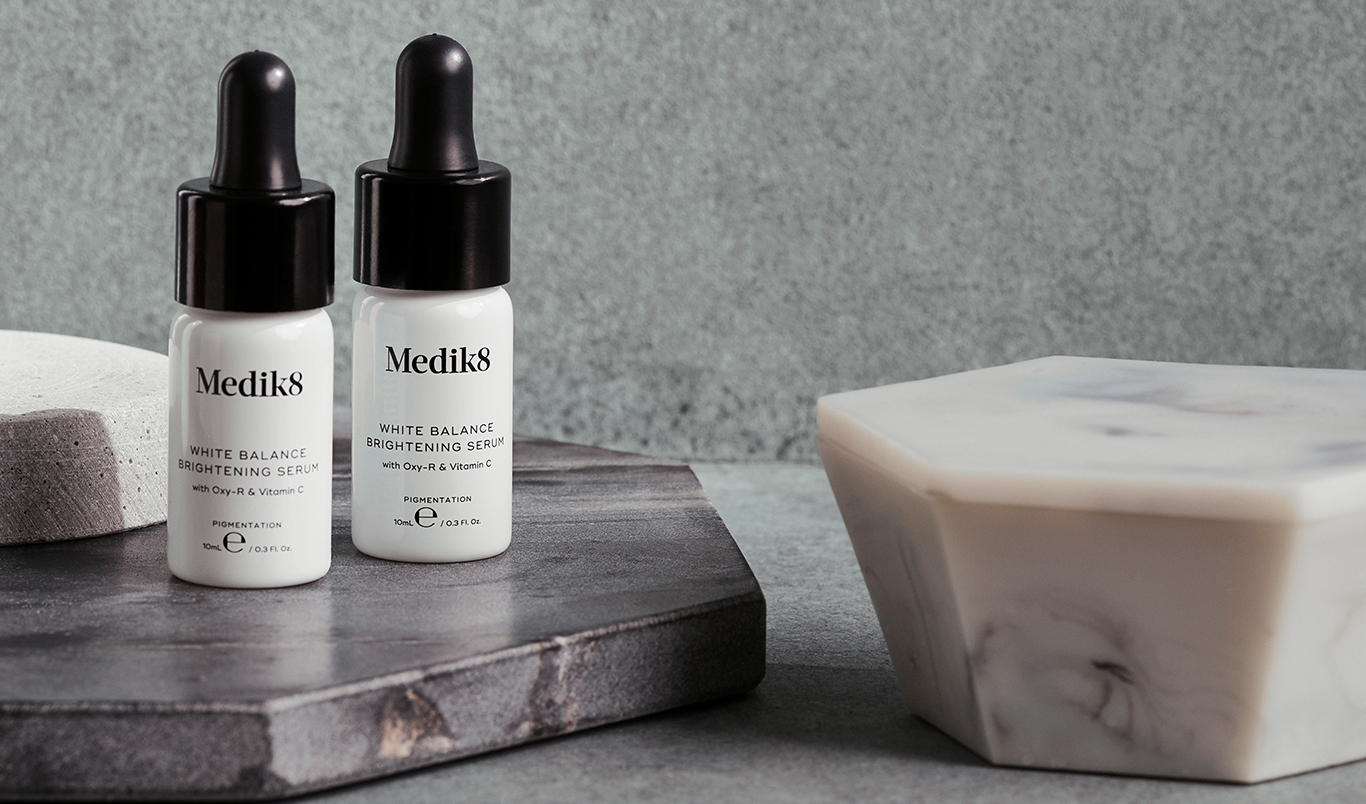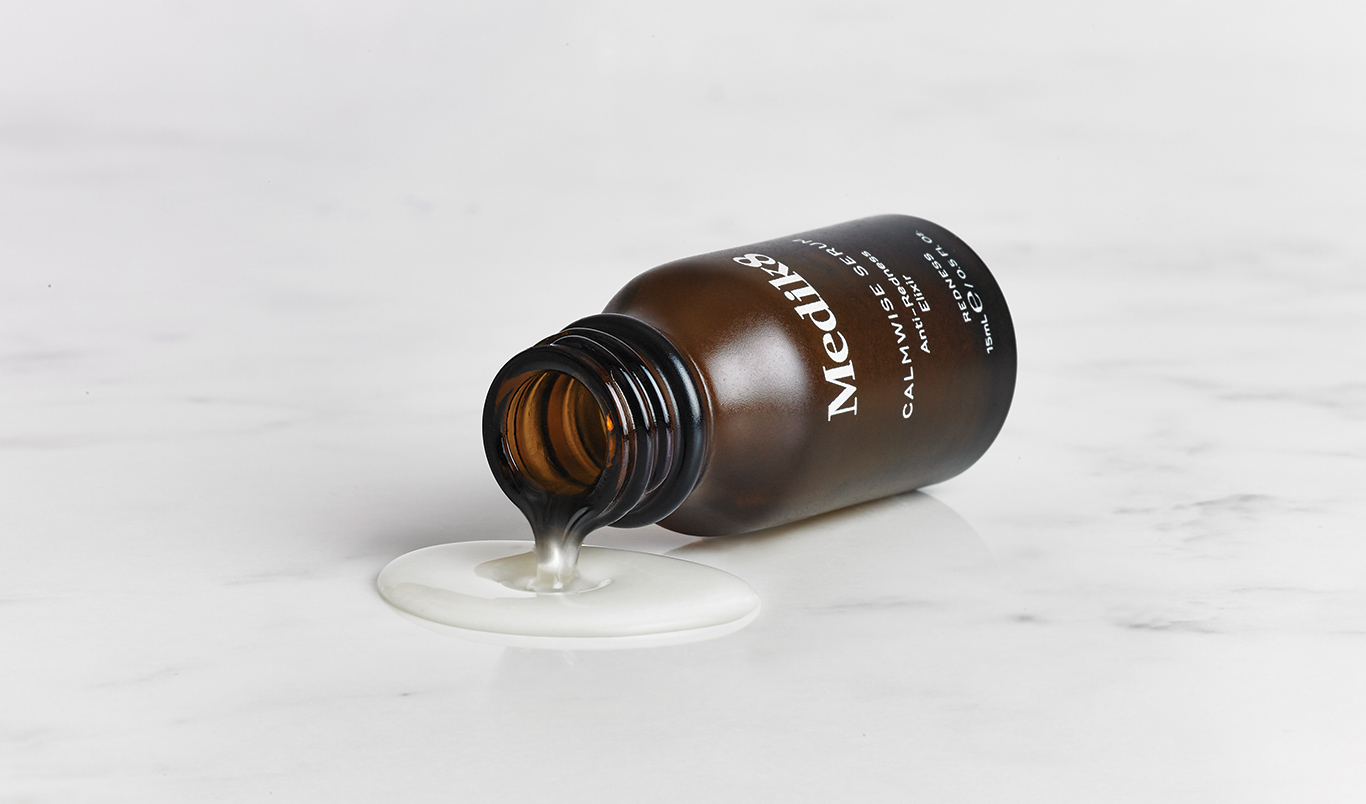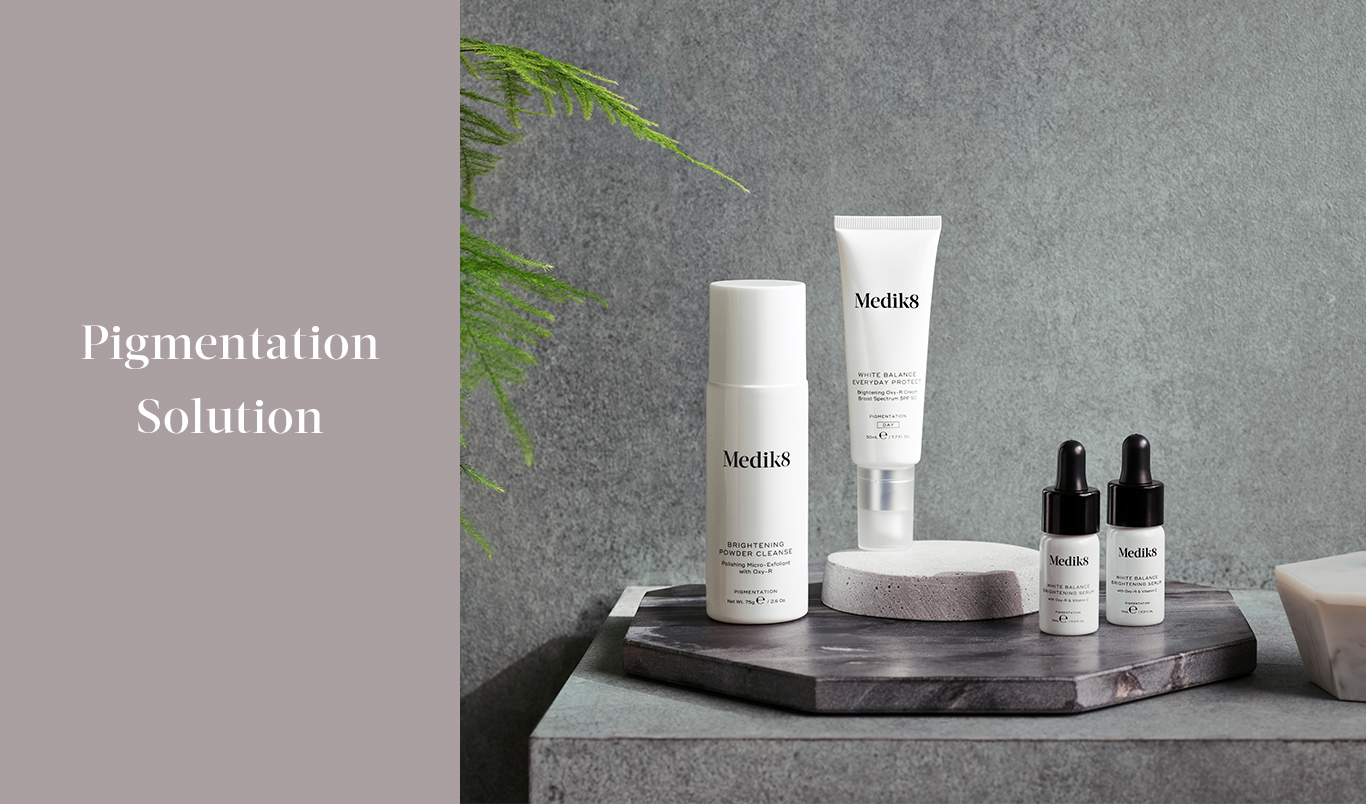
The 7 Routes to Brightening
Dull, uneven skin with blotches and dark marks are a common concern as we get that little bit older. They can make us feel less confident with our skin; especially without make-up. Medik8 has tirelessly researched into this area and discovered 7 ways in which we can tackle and improve this condition once and for all.
Hyperpigmented skin in the form of uneven skin tone or dark spots, is often caused by the overproduction of melanin. Melanin is a natural pigment present in our skin and hair that provides essential UV protection from the sun’s harmful rays. Melanin is formed in a skin cell called a melanocyte. The process starts with an amino acid called tyrosine, which is oxidised by the enzyme tyrosinase to convert it into melanin. Most pigmentation treatments work by blocking the enzyme, tyrosinase, to stop melanin being produced. But here at Medik8, we didn’t stop there. We developed an intense, 7-step approach for tackling pigmentation head on. With White Balance® Brightening Serum you can wave goodbye to uneven skin texture, and welcome in luminous, more perfected skin.
1. Block the transfer of tyrosine
Tyrosine is essentially a younger version of melanin. But in order for tyrosine to be converted into melanin, it has to enter a melanocyte cell. By saturating the melanocyte cell with a nourishing amino acid called leucine, we can make it extremely difficult for tyrosine to enter the cell, meaning pigmentation is significantly reduced.
2. Stop the production of tyrosinase
Tyrosinase is the enzyme that converts tyrosine to melanin. Therefore lowering the levels of tyrosinase within the skin can help to inhibit excess melanin production before it has even begun.
3. Block the enzyme, tyrosinase
Because tyrosinase is the main enzyme responsible for creating melanin, blocking its action can significantly brighten areas of pigmentation. Oxyresveratrol, a natural botanical found in our White Balance Brightening Serum, helps to ‘switch off’ the control centre of the tyrosinase molecule so that it cannot spark the production of melanin. Ethylated ascorbic acid (vitamin C) is also capable of blocking the action of tyrosinase.
4. Destabilising tyrosinase
Lowering the stability of tyrosinase, reduces its capability to start the melanin production cycle.
5. Stimulate the breakdown of tyrosinase
Less tyrosinase means less melanin production. So breaking down existing stores of tyrosinase within the skin can help to diminish the appearance of pigmentation.
6. Block melanin transfer to skin cells
When melanin is produced, it has to be transported to the skin cells before it can show up on the complexion. So blocking this movement can stop pigmentation from appearing on the surface of the skin. This can be achieved by encouraging melanin deposits to clump together so they can’t travel to the skin’s surface.
7. Antioxidant
Free radicals can also contribute to hyperpigmentation. Just like the tyrosinase enzyme, they can oxidise tyrosine, converting it into melanin. Antioxidant-rich oxyresveratrol and ethylated ascorbic acid can block the formation of free radicals to stop them from triggering melanin production.
*Y. Kim et al., Journal of Biological Chemistry, 2002, 277(18), pp 16340-4
Oxyresveratrol has been found to be 32 times better at inhibiting tyrosinase than
kojic acid.*




